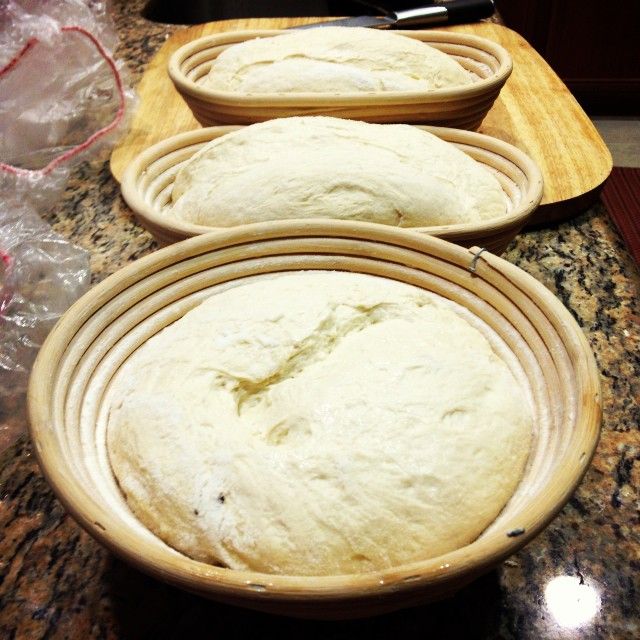Blog posts
World Bread Day Bread
- Log in or register to post comments
- 2 comments
- View post
- Foodzeit's Blog
Easy-As WholeMeal Oat Loaf
I believe I have made THE easiest fool-proof recipe for a nice wholesome loaf. I have made it a number of times, and it worked every time, like a dream!
Full recipe and more pictures to come on my blog here
- Log in or register to post comments
- View post
- HokeyPokey's Blog
Poolish Pizza - Ken Forkish FWS for WBDay - Fig cookies yumm

I fired up the WFO oven today. The lovely weather has put me in the mood to do a little cooking outdoors.
I have been wanting to bake Ken Forkish FWS pizza formula using a poolish ferment.
Friday night I mixed up the poolish for his pizza with the intent of baking them in my wfo oven Sunday. That's one of the good things about making pizza's 'pizze' :) You can put it off a day or two and still hopefully have some decent dough to work with. That's just what happened. Pizza plans were canceled and we went out Sunday and Monday for the evening.
- Log in or register to post comments
- 19 comments
- View post
- SylviaH's Blog
Focaccia

Tonight's focaccia was delicicous, wonderfully crunchy crush, tender and tasty inside and out. I used a rosemary infused olive oil, parsley and garlic in the dough. Added chopped olives, garlic, salt, and parmesan to the oiled top. Baked it on my stone. Went well with our spaghetti dinner.
- Log in or register to post comments
- 1 comment
- View post
- aptk's Blog
10/13 Bake

All white flour Sourdough at 75% Hydro this time.
[URL=http://s1292.photobucket.com/user/Steelhead503/media/Baking/1013Bake1_zps9f03952d.jpg.html] [/URL]
[/URL]
- Log in or register to post comments
- 10 comments
- View post
- Wingnut's Blog
Dabrownman's Blog Index

2013 The Fresh Loaf Dabrownman’s Blog
1/4/2013 - Panettone - The Last Bake of 2012
1/4/2013 - New Year's Day Pizza and Banana Bread Cupcakes
1/5/2012 - Hanseata’s Sausage Filled Puff Pastry with Cheese
- Log in or register to post comments
- 6 comments
- View post
- dabrownman's Blog
Midweek sourdough, double-retardation

I've been looking for a way to do sourdoughs in the middle of a working week without taking too much time out of a busy schedule. My first attempts involved stretching, folding and shaping the dough in the morning then cold-proving it in the fridge while I was at work for an evening bake, but this was problematic when I started a new job (community neuro-rehab) which demanded an earlier start. Here's the solution, needing only a bit of attention on three successive evenings. I'm using a 100% hydration wholemeal rye starter which I keep in the fridge.
- Log in or register to post comments
- 15 comments
- View post
- Anomalous's Blog
Crescia al Formaggio from "The Bread Bible"

The weather is finally cooling off here in Phoenix and for my hubby and I that means one thing: picnic season has arrived! And with it, my favorite part, a reason to bake picnic breads.
I think I've had a fairly successful Crescia al Formaggio, although I'm not sure that the inside looks as it should. The bread was flavorful, even the sponge that the melted cheese didn't get to.
- Log in or register to post comments
- 3 comments
- View post
- Shutzie27's Blog

